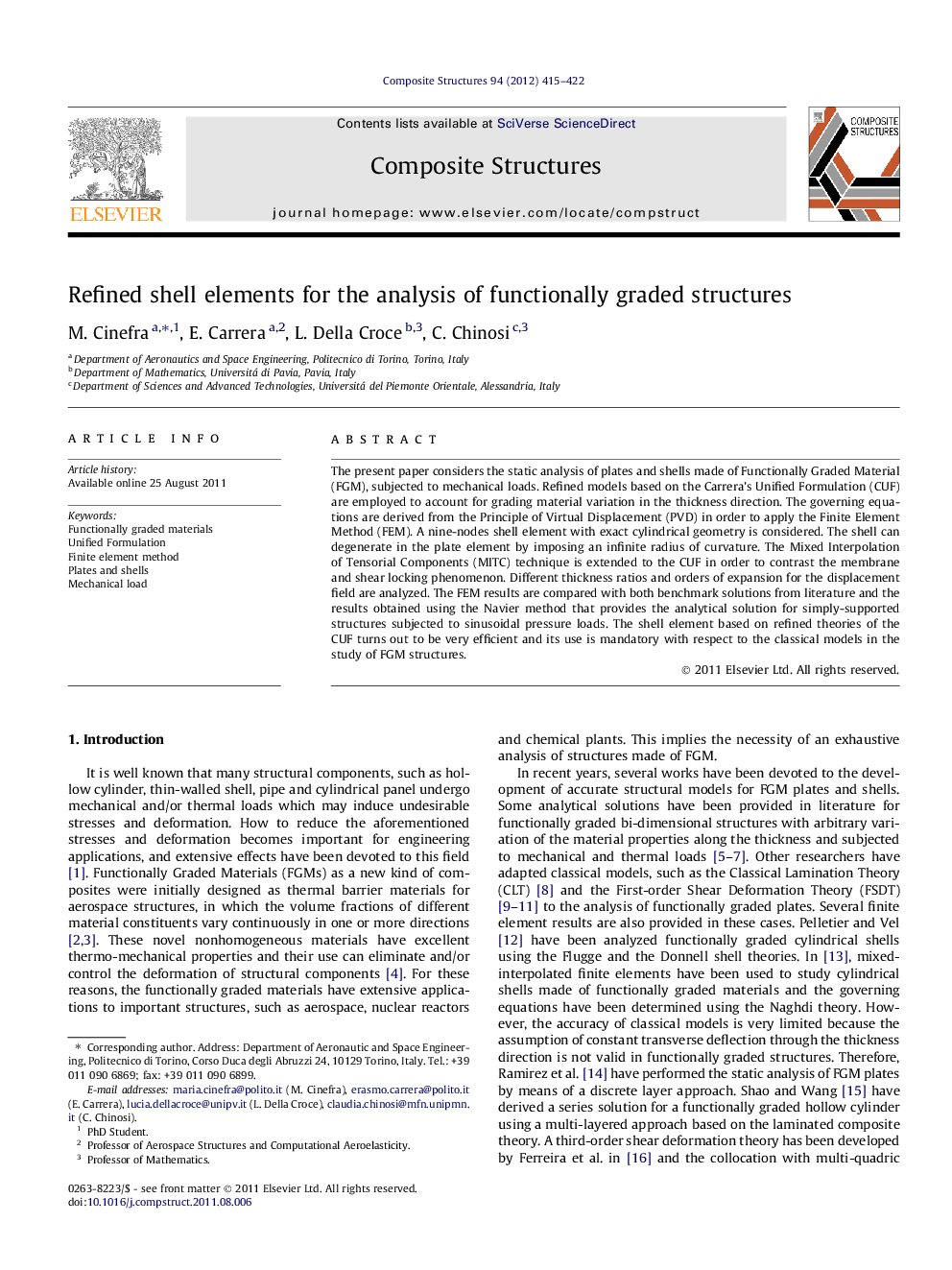| کد مقاله | کد نشریه | سال انتشار | مقاله انگلیسی | نسخه تمام متن |
|---|---|---|---|---|
| 252365 | 502962 | 2012 | 8 صفحه PDF | دانلود رایگان |

The present paper considers the static analysis of plates and shells made of Functionally Graded Material (FGM), subjected to mechanical loads. Refined models based on the Carrera’s Unified Formulation (CUF) are employed to account for grading material variation in the thickness direction. The governing equations are derived from the Principle of Virtual Displacement (PVD) in order to apply the Finite Element Method (FEM). A nine-nodes shell element with exact cylindrical geometry is considered. The shell can degenerate in the plate element by imposing an infinite radius of curvature. The Mixed Interpolation of Tensorial Components (MITC) technique is extended to the CUF in order to contrast the membrane and shear locking phenomenon. Different thickness ratios and orders of expansion for the displacement field are analyzed. The FEM results are compared with both benchmark solutions from literature and the results obtained using the Navier method that provides the analytical solution for simply-supported structures subjected to sinusoidal pressure loads. The shell element based on refined theories of the CUF turns out to be very efficient and its use is mandatory with respect to the classical models in the study of FGM structures.
► The shell finite element based on the CUF provides very accurate results in the analysis of FG plates and shells.
► The locking phenomenon does not appear when the structures is very thin.
► Higher order models are necessary to correctly describe the distribution of displacements and stresses in FG structures.
► The assumption of transverse displacement constant along the thickness is not valid in functionally graded structures.
Journal: Composite Structures - Volume 94, Issue 2, January 2012, Pages 415–422